
The brown trout is a species of salmonid ray-finned fish and the most widely distributed species of the genus Salmo, endemic to most of Europe, West Asia and parts of North Africa, and has been widely introduced globally as a game fish, even becoming one of the world's worst invasive species outside of its native range.

Fly tying is the process of producing an artificial fly used by fly fishing anglers to catch fish. Fly tying is a manual process done by a single individual using hand tools and a variety of natural and manmade materials that are attached to a hook. Although the recent history of fly tying dates from the middle 1800s, fly tyers were engaged in tying flys since at least 200 AD.

The Pheasant Tail nymph or PT Nymph or Sawyer's Pheasant Tail is a popular all purpose nymph imitation used by fly anglers. It imitates a large variety of olive, olive-brown colored aquatic insect larvae that many fish including trout and grayling feed upon.
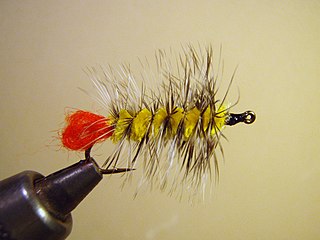
The Woolly Worm is an artificial fly commonly categorized as a wet fly or nymph and is fished under the water surface. It is a popular pattern for freshwater game fish and was a very popular fly in the 1950s–1970s in the west. Charles Brooks in Nymph Fishing for Larger Trout recommends the Woolly Worm as a general purpose nymph pattern in most western trout waters in any fly box. Woolly Worms are typically fished in streams, rivers, ponds, and lakes for trout, bass, and panfish. Today, Woolly Worms are tied in a variety of styles and colors to imitate a large aquatic nymphs such as stoneflies, dragonflies, damselflies or hellgrammites.
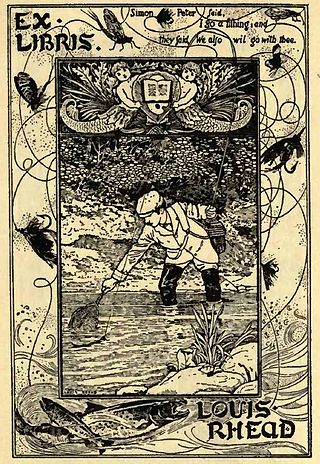
This general annotated bibliography page provides an overview of notable and not so notable works in the English language regarding the sport of fly fishing, listed by year of first publication. Although not all the listed books are devoted exclusively to fly fishing, all these titles contain significant fly fishing content. The focus of the present page is on classic general texts on fly fishing and its history, together with notable public or university library collections dedicated to fly fishing.

Frederic Maurice Halford, pseudonym Detached Badger, was a wealthy and influential British angler and fly fishing author. Halford is most noted for his development and promotion of the dry fly technique on English chalk streams. He is generally accepted as "The Father of Modern Dry Fly Fishing". John Waller Hills, A History of Fly Fishing for Trout (1921) called Halford "The Historian of the Dry Fly".
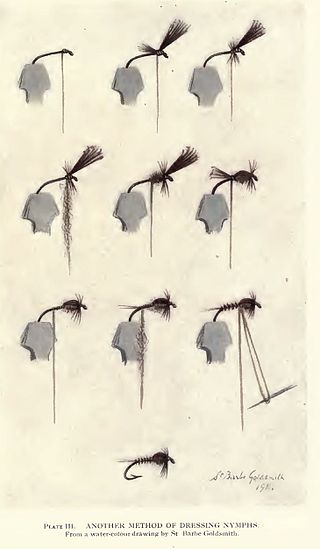
The Way of a Trout with a Fly and Some Further Studies in Minor Tactics is a fly fishing book written by G. E. M. Skues published in London in 1921. This was Skues's second book after Minor Tactics of the Chalk Stream (1910).
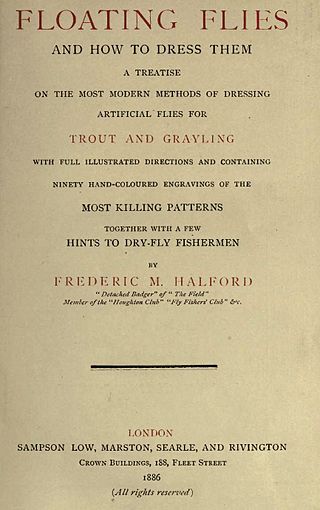
Floating Flies and How to Dress Them - A Treatise on the Most Modern Methods of Dressing Artificial Flies for Trout and Grayling with Full Illustrated Directions and Containing Ninety Hand-Coloured Engravings of the Most Killing Patterns Together with a Few Hints to Dry-Fly Fishermen is a fly fishing book written by Frederic M. Halford published in London in April 1886 by Sampson Low. A deluxe edition on large paper sold out before publication and the trade edition of 500 nearly so.

Favorite Flies and Their Histories - With many replies from practical anglers to inquiries concerning how, when and where to use them-Illustrated by Thirty-two colored plates of flies, six engravings of natural insects and eight reproductions of photographs is a fly fishing book written by Mary Orvis Marbury published in Boston in April 1892 by Houghton Mifflin. It was considered by most fly fishers as the standard reference on flies in its era.

The Salmon Fly - How to Dress It and How to Use It is a fly fishing book written by George M. Kelson published in London in 1895 by Messers. Wyman & Sons, Limited. This Victorian guide to fly fish tying built up the illusion that angling for salmon required feathers of exotic bird species.
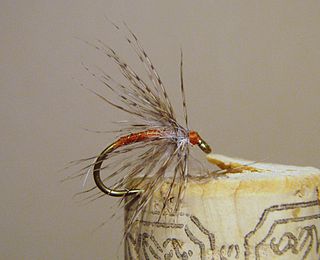
The Partridge and Orange is an artificial fly commonly categorized as a wet fly or soft hackle and is fished under the water surface. The fly is a very well known fly with its roots set firmly in English angling history. It is an impressionistic pattern fished successfully during caddis hatches and spinner falls. The Partridge and Orange is traditionally a trout and grayling pattern but may be used for other aquatic insect feeding species.

This annotated bibliography is intended to list both notable and not so notable works of English language, non-fiction and fiction related to the sport of fly fishing listed by year published. Although 100% of any book listed is not necessarily devoted to fly fishing, all these titles have significant fly fishing content. Included in this bibliography is a list of fly tying, fly tackle, regional guides, memoirs, stories and fly fishing fiction related literature.

Dry-Fly Fishing in Theory and Practice (1889) is British author and angler Frederic M. Halford's second and most influential book on dry fly fishing. It followed Floating Flies and How to Dress Them (1886) and this pair of books initiated some 40 years of a rigid, and sometimes dogmatic school, the Halfordian school, of dry fly fishing, especially on English chalk streams. The work also played a significant role in the development of dry-fly fishing in America.
George Selwyn Marryat was a country gentleman and British angler most noted for his relationship with F. M. Halford, Francis Francis and the development of dry-fly fishing on the chalk streams of southern England. Upon his death in 1896, he became known as the "Prince of Fly Fishers".

The Fly-Fisher's Entomology, Illustrated by Coloured Representations of the Natural and Artificial Insect and Accompanied by a Few Observations and Instructions Relative to Trout-and-Grayling Fishing, first published in 1836 by Alfred Ronalds (1802–1860), was the first comprehensive work related to the entomology associated with fly fishing. Although the work was Ronalds' only book, it was published in 11 editions between 1836 and 1913 and has been extensively reprinted in the last 100 years.

Fly Fishing, first published in 1899 by English author and diplomat Edward Grey, 1st Viscount Grey of Fallodon (1862–1933), is a book about fly fishing English chalk streams and spate rivers for trout and salmon. It includes reminisces about the author's fly fishing experiences on Hampshire rivers. The book was in print for nearly 50 years and has been extensively reprinted in the 21st century.

The Elk Hair Caddis is a dry fly commonly used for trout fishing. The Elk Hair Caddis was created by Pennsylvania fly tyer Al Troth in 1957. He is considered a pioneer in the sport of fly fishing for this invention.
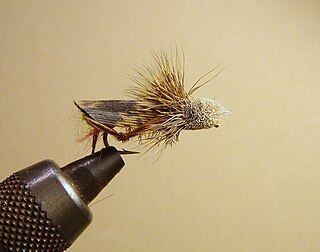
Dave's Hopper is an artificial fly used for fly fishing, designed to imitate adult grasshoppers and other Orthoptera species. It is considered a dry fly terrestrial pattern. It was designed by fly tyer and angler Dave Whitlock, and combines the best aspects of Joe's Hopper and Muddler Minnow patterns.

The Wulff series of dry flies evolved from a dry fly style conceived by angler Lee Wulff in the 1930s.

Terrestrial flies are a broad group of artificial flies used by fly anglers to imitate terrestrial insects that fall prey to fish in rivers, streams and lakes. Most typical are patterns imitating grasshoppers, crickets, ants, beetles, leaf hoppers, cicadas and moths.

























